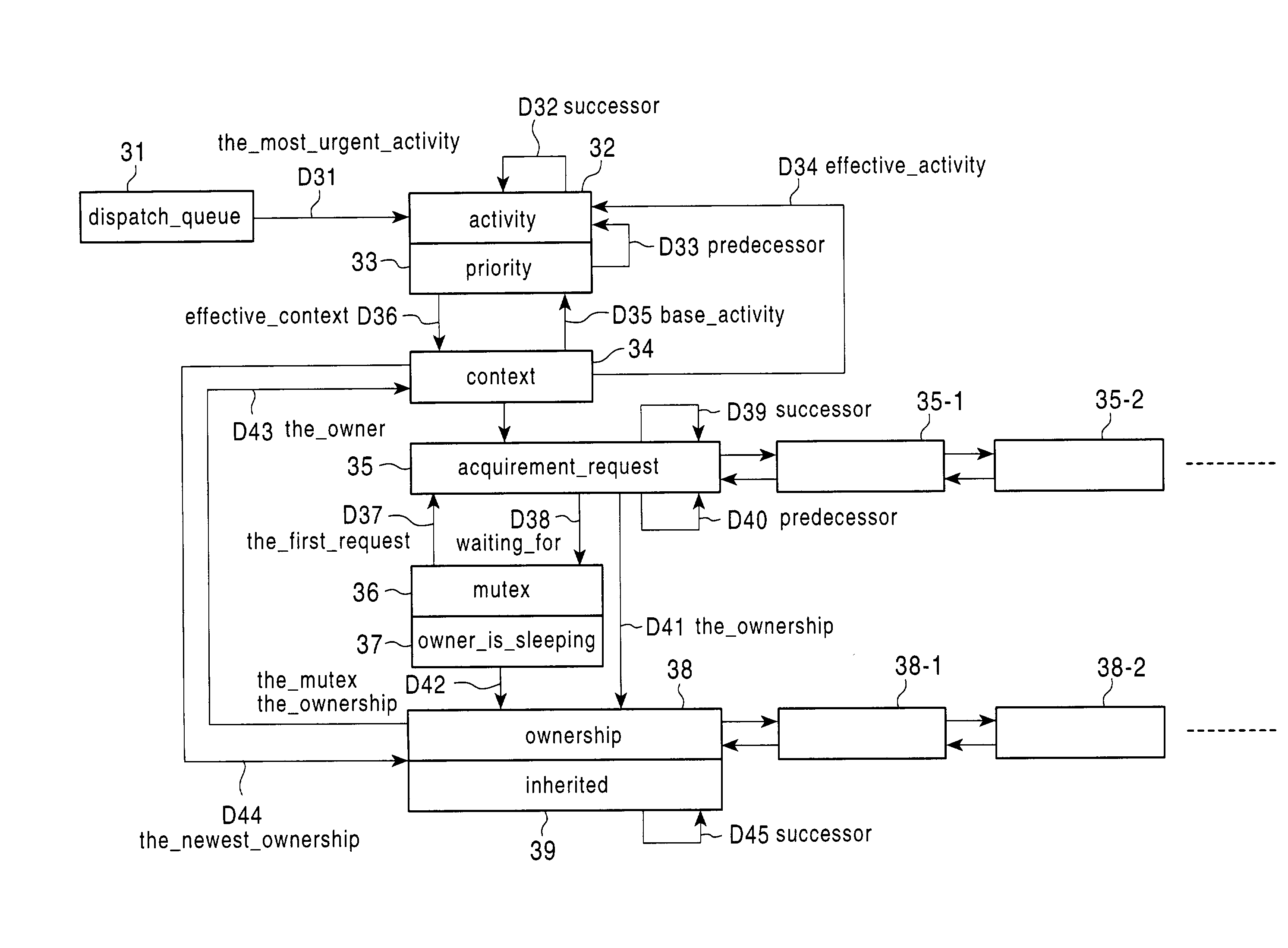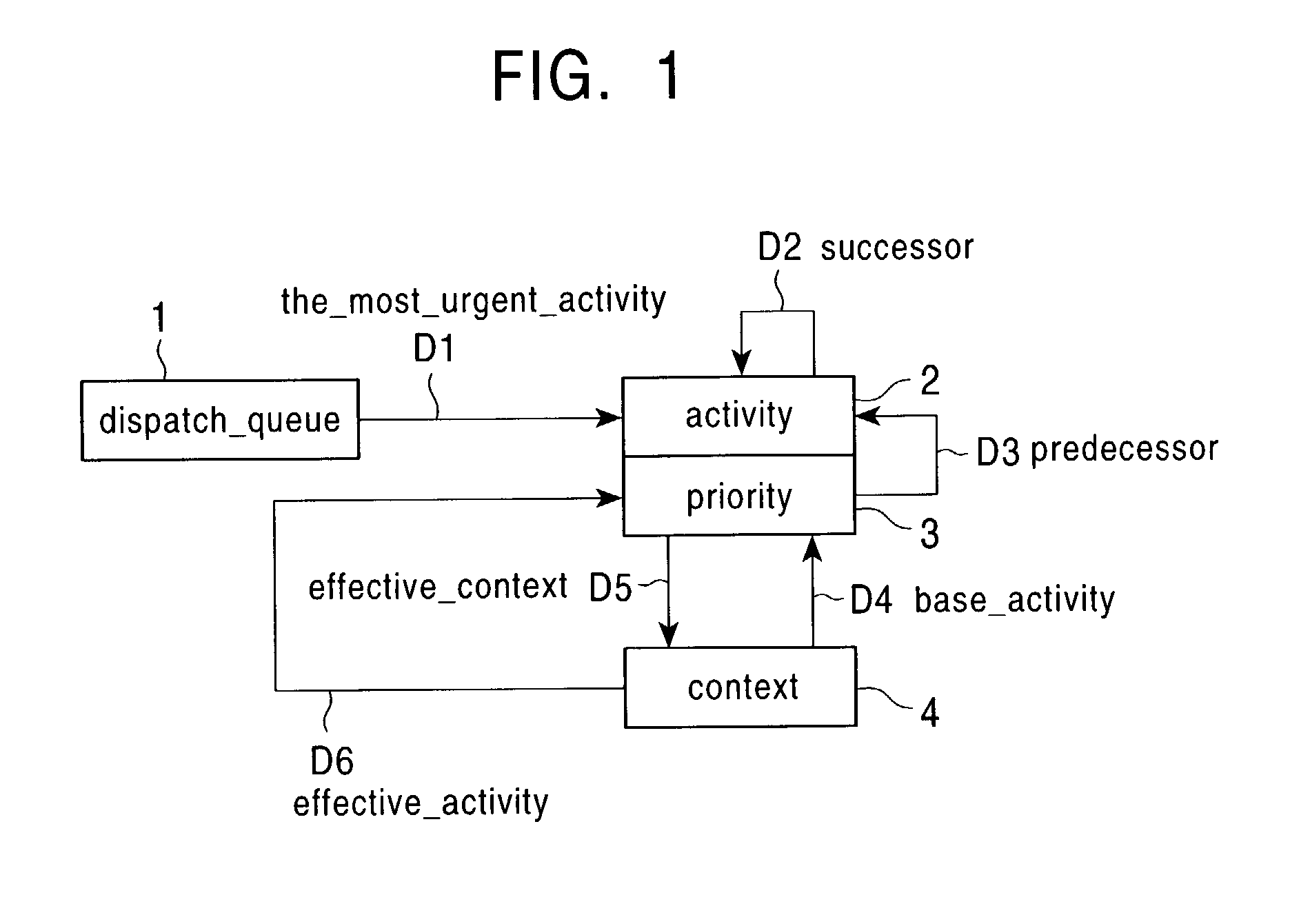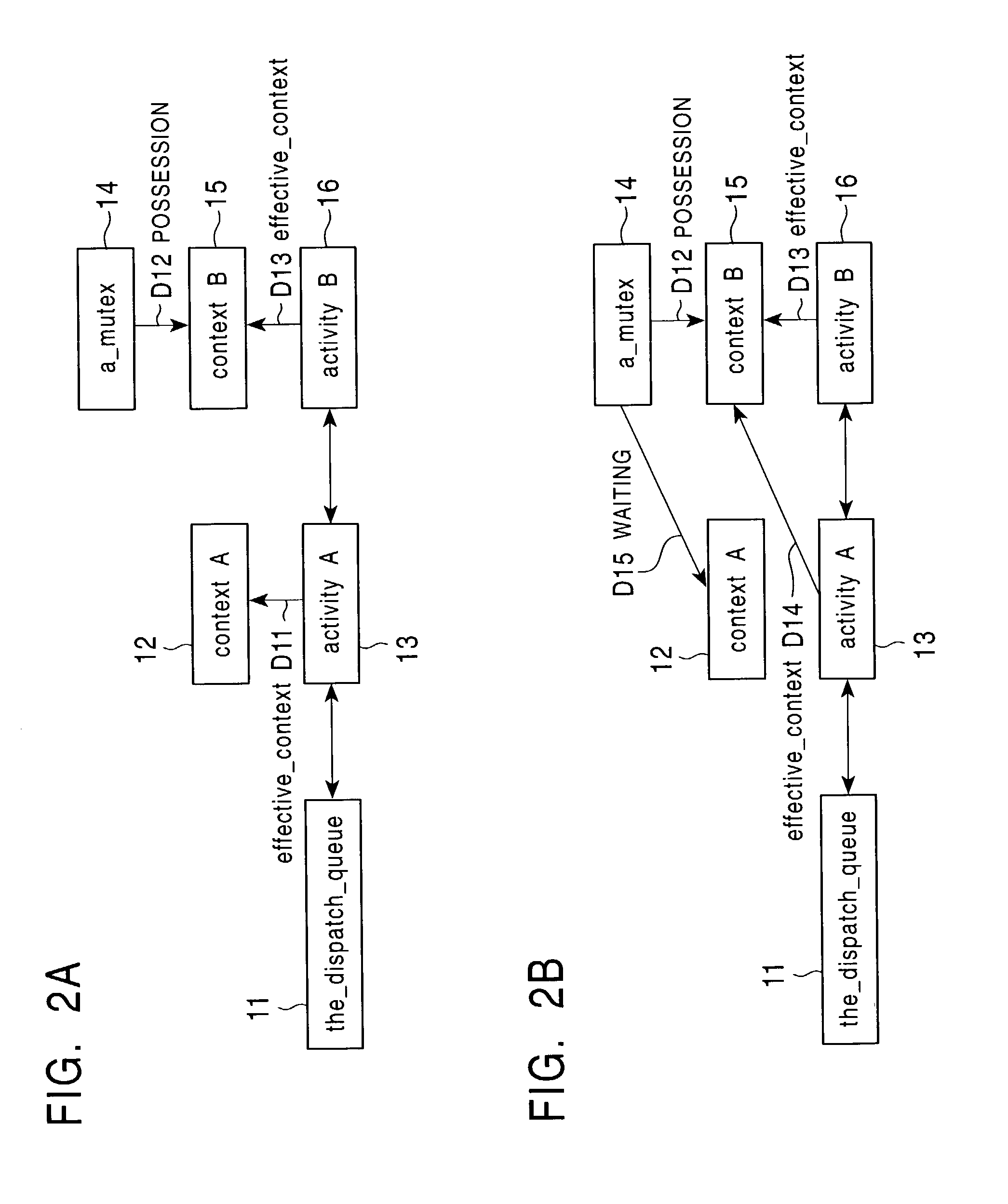Task management system
a task management and task technology, applied in the field of task management system, can solve the problems of increasing overhead, increasing overhead associated, and generating overhead, and achieve the effect of reducing the number of times the third data block is operated for terminating or starting the client task
- Summary
- Abstract
- Description
- Claims
- Application Information
AI Technical Summary
Benefits of technology
Problems solved by technology
Method used
Image
Examples
first embodiment
[0056]Embodiments of the present invention are described below with reference to the accompanying drawings.
[0057]A task management system according to a first embodiment of the present invention can efficiently realize an exclusive control mechanism employing a priority inheritance protocol, compared with the technique of the related art.
[0058]FIG. 1 shows context and activity applied to the first embodiment of the present invention.
[0059]When the technique of the related art is used to inherit priority, the following two processes are performed. First, task priority is changed. Second, when tasks are linked to a dispatch queue, a process that moves the tasks to appropriate positions in the order of the changed priority is performed.
[0060]In the first embodiment, to simplify these processes, information that must be inherited is separated from other information, and these pieces of information are treated as one to be inserted into or deleted from “dispatch_queue”1. Specifically, as...
second embodiment
[0174]A second embodiment of the present invention is described below.
[0175]A task management system according to the second embodiment of the present invention can efficiently realize priority inheritance, for example, when a client task requests a service from a server task.
[0176]In the second embodiment, as shown in FIG. 1, in order to simplify the process of starting or stopping a server task and a priority inheritance process, information that must be inherited is separated from other information, the information is treated as one to be inserted into or deleted from “dispatch_queue”1. Specifically, one task is represented by “activity”2 that is a data configuration retaining priority, and “context”4 that is a data configuration retaining other information. “Activity”2 is treated as one to be inserted into or deleted from “dispatch_queue”1. Also, it is assumed that, unlike an ordinary task, only the context 4 is generated when the server task is generated.
[0177]The division enab...
PUM
 Login to View More
Login to View More Abstract
Description
Claims
Application Information
 Login to View More
Login to View More - R&D
- Intellectual Property
- Life Sciences
- Materials
- Tech Scout
- Unparalleled Data Quality
- Higher Quality Content
- 60% Fewer Hallucinations
Browse by: Latest US Patents, China's latest patents, Technical Efficacy Thesaurus, Application Domain, Technology Topic, Popular Technical Reports.
© 2025 PatSnap. All rights reserved.Legal|Privacy policy|Modern Slavery Act Transparency Statement|Sitemap|About US| Contact US: help@patsnap.com



